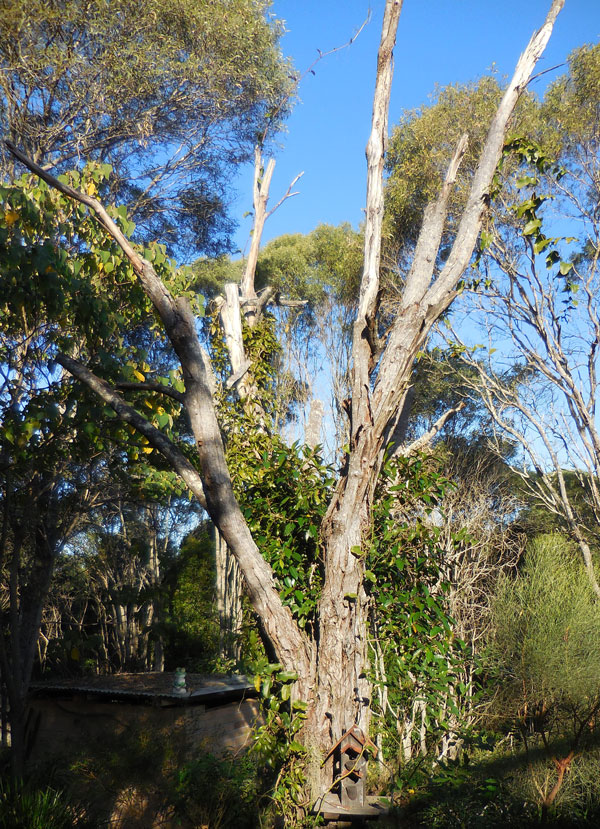We are Land for Wildlifers – so, that means we are interested in helping our wildlife survive in a fragmented world. I kill weeds and plant trees, but I do it for the wildlife.
The humble, much maligned wattle or Acacia species is the Land for Wildlifers’ one true friend. I would like a dollar for every time I have heard “There is nothing in there but wattles”. After one such encounter, I went into the wattle ‘desert’ and counted 28 diffierent species of native plant regenerating in amongst the wattles. Sometimes it is hard to see the forest for the trees (or wattles) in this case!

Wattles… the gift that keeps on giving, even when dead. Photo by Phil Moran.
Many wattle seeds have an oil rich elaisome or aril which is greatly valued by ants. The ants steal the wattle seed and therefore spread the seed around. Wattles are frost tolerant and can also handle dry periods.
The list of wildlife that make wattles home is far too large to list, but includes many bird species, beetles, ants, gliders and possums, moths, butterflies, wasps, bees, micro bats, lizards, spiders etc etc. They are high-rise homes for our wildlife!
And then they die. People generally say wattles are short-lived. Some are, some aren’t. I have Hickory Wattles (Acacia disparrima subsp. disparrima) on my place that are 30 years old and still going strong. I have some dead ones too, as shown in the photograph. But even these dead wattles are gifts that keep on giving… to our wildlife. This dead one shown below has several vines and figs all growing over it. Dead wattles create another treat for wildlife, called ‘structure’, or depth, cover and habitat. As a fellow Land for Wildlifer, we know that Australian bushlands are not neat, they are habitat.
Phil Moran Land for Wildlife member Cooran, Sunshine Coast Manager, Noosa and Districts Landcare

Great story on wattles
We have some we put in a garden bed and have grown so fast and have given protection to other plants, a great way to get some foliage established quickly.
They say wattles have a lot of tannins in them and read some articles one particular in South Africa. That they have become invasive and the tannins are leaching into the soil and nothing will grow their.
We have a fine leaf wattle over the back and it’s lost most of its leaves over the last few years and any grass on the ground is dead, so I am a bit concerned about it.
Can anyone shed some light here.